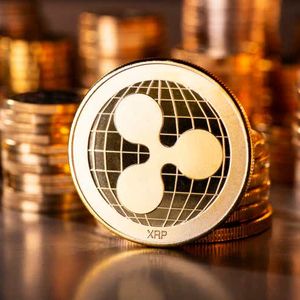Ripple: Long-Standing SEC Lawsuit Ends, What This Means For XRP (Rating Downgrade)
7 min read
Summary Ripple gains a favorable outcome in its long-standing legal brawl with SEC. However, slight ambiguity remains in using XRP in Ripple’s on-demand liquidity service. Ripple is slammed with a $125 million civil penalty and a generic injunction order for further securities sales. Despite the latest ruling, prospects of a spot XRP ETF remain slim, as no issuer has shown interest in filing for one, and demand for existing XRP ETPs remains weak. The latest ruling could potentially spark some institutional interest in existing XRP ETPs as XRP gains more legal clarity. The long-awaited resolution has arrived in the years-long, most-watched legal brawl in the crypto space. The long-standing legal brawl between the SEC and Ripple reached a final decision yesterday, with a fairly favorable outcome for Ripple ( XRP-USD ). In the past year, the SEC’s main contention in the Ripple case has attenuated, following Judge Analisa Torres’ split decision ruling , last year in July, that absolved Ripple Labs of violating federal securities laws by selling XRP on public exchanges. The judge, however, ruled that Ripple, on the other hand, violated federal securities laws by selling XRP directly to institutional investors. The July 2023 victory saw XRP surge as high as 75% and Coinbase ( COIN ) which had suspended the trading of XRP on its platform since January 2021 (in the light of the SEC’s case), relisted and resumed the trade of XRP. Ripple’s resolve in the case has strengthened since that ruling. The SEC filed an interlocutory appeal months later on the July 2023 ruling, but the appeal was subsequently denied. The SEC also subsequently dropped its charges against Ripple execs Brad Garlinghouse and Christen Larson last October. The SEC-Ripple case had become some sort of “proxy war” between the crypto community and regulators, and this latest outcome is a pivotal step toward regulatory clarity. In a time when institutional investors are gaining direct exposure through the approval of crypto spot ETFs, regulatory clarity regarding the securities or non-securities status of a crypto asset is becoming a top consideration for crypto investors. The regulatory classification of a crypto asset is a foremost criterion for a potential spot ETF consideration. Spot Bitcoin ETF Inflows and BTC spot price trend correlation (Bloomberg) We have witnessed the direct benefits of a crypto asset gaining institutional exposure. The spot Bitcoin and spot Ethereum ETF approvals have shown that institutional demand for the spot ETFs directly correlates to demand for the underlying crypto asset, which in turn potentially puts upward pressure on price. Since approval, the spot Bitcoin ETF inflows have correlated with the spot price trend of Bitcoin. A Spot XRP ETF, Anyone? I initially considered the spot Bitcoin ETF approval a “fluke occurrence” and anticipated that it would take a while to see such approval for another crypto asset, considering the several rejections and the lengthy back-and-forth between regulators and applicants before the spot Bitcoin ETFs were finally approved on January 10th. Remember that one of the catalysts for the approval was Grayscale’s litigation against the SEC for denying the conversion of its future-based ETP fund into a spot ETF. Somewhat surprisingly, a second spot ETF approval for a crypto asset – the spot Ethereum ETF – came sooner than anticipated (just about five months after the spot Bitcoin ETFs), and the approval proceedings between the regulator and applicants went more smoothly. In my coverage of Ethereum after its spot ETF approval, I noted that another crypto spot ETF approval is unlikely to happen soon due to the lack of regulatory clarity on most of the major crypto assets. I, however, personally believe that it is likely a wrap for crypto spot ETF approval in the U.S. for this market cycle (or at least for this year) because the regulatory status of most major altcoins remains ambiguous at the moment. Excerpt from previous Ethereum coverage The biggest hurdle to XRP’s institutional acceptance was the unclear regulatory classification of the asset. With the latest regulatory clarity that XRP has gained, I won’t rule out XRP as a potential next candidate for a spot ETF. I am, however, very cautiously optimistic about the prospect of an XRP ETF approval. So far, no issuer has shown any interest in an XRP spot ETF filing. Ripple CEO has expressed optimism about the prospects of a spot XRP ETF , calling it “inevitable.” 2023 digital asset fund flows (CoinShares) XRP has historically seen much less flow into its ETPs compared to peers like Solana ( SOL-USD ). Last year’s flows report by CoinShares shows XRP saw a paltry $18 million in flows, while Solana recorded $167 million. In terms of AuM Solana surpassed XRP by $762 million. YTD (Jan. – Aug. 2024) digital asset fund flows (CoinShares) So far this year, XRP has seen $21 million in YTD flows, with $100 million in AuM. While SOL has recorded $66 million in net flows and a $1.46 billion kn AuM. My comparison of XRP and SOL is driven by the fact that Solana is also considered a potential next contender for a spot ETF and both assets are in the top 10 cryptocurrencies ranked by market cap. For us, both in terms of investability and also what we hear from our clients, Bitcoin and Ethereum definitely meet that bar, but it will be a while before we see anything else Samara Cohen, BlackRock’s CIO for ETF and Index Investments Above are the words of Samara Cohen, BlackRock’s Chief Investment Officer for ETF and Index Investments, regarding the prospects of other crypto assets spot ETFs. Going by what Cohen said, client demand and investability are top factors in issuers’ consideration for spot ETFs. I think XRP doesn’t meet the bar yet in terms of client demand, judging by the flow records and AuM size in its existing ETPs. Another angle I view this from is that the years-long legal case and ambiguity surrounding XRP regulatory status might have been a contributing factor that stifled the asset demand growth among traditional investors. The latest regulatory clarity may now give traditional investors the confidence to engage with XRP ETPs. Overall, the latest ruling is a win for Ripple. Though it comes with a $125 civil penalty against Ripple , it is still a far cry from the $2 billion penalty initially sought by the SEC. While this ruling is likely the complete close of the case, the SEC could still appeal the ruling in a 60-day window. Furthermore, precise clarity is also expected particularly regarding the use of XRP in Ripple’s On-Demand Liquidity (“ODL”) service. Ripple had earlier in April discontinued the use of XRP for U.S.-based ODL transactions as part of regulatory compliance. Ripple replaced XRP with USDT ( USDT-USD ) stablecoin as ODL bridge currency. This marked a setback for one of the main use cases of XRP in the Ripple ecosystem. For readers not familiar with Ripple’s ODL, it is an instant liquidity solution provided by Ripple for cross-border transaction settlements facilitated through the XRP ledger, in which XRP serves as an instant source of liquidity and a bridge currency. For example, when an institution processes cross-border payment in its local currency, say the U.S. dollar, the local currency is instantly converted into XRP. The converted XRP is then transferred via the XRP Ledger anywhere in the globe. The converted XRP is then converted to the recipient’s local currency. This process is like a replacement for traditional nostro accounts. Ripple Labs recently announced that it will launch a stablecoin later this year. The Ripple USD (RLUSD) will be launched on both XRP Ledger and Ethereum. This will apparently replace the current use of USDT for U.S.-based ODL settlements. With these developments, XRP holders need to monitor future workarounds that Ripple might present in its use of XRP in U.S.-based ODL. Though a majority of ODL transactions currently occur outside the U.S. (hence not subject to U.S. laws) it is still important for XRP investors to monitor Ripple’s strategies and potential workarounds concerning the use of XRP in U.S.-based ODL, staying informed about any shifts in Ripple’s operational approach and their impact on XRP’s role and utility within the Ripple ecosystem. The long-term implication of these changes could influence XRP’s demand and price. My earlier coverage of Ripple in February came with a “buy” rating. In that article, I highlighted how asset tokenization presents fresh opportunities for Ripple. Asset tokenization has seen steady growth and the XRP Ledger is becoming an active network for issuance of tokenized assets. Last week Ripple announced a tokenized version of the U.S. Treasury bills launching on XRPL. The XRP Ledger is purpose-built for institutional-grade financial use cases, and its prospects as a potential go-to platform for asset tokenization still hold, in my view. Bottom Line Ripple still holds prospects as a top crypto. However, I believe that the use case of XRP in the Ripple ecosystem still needs proper delineation. Moreso, considering the soon-to-be-launched RLUSD stablecoin, XRP’s prominence in the Ripple ecosystem could recede, especially in U.S.-based settlements. I also believe that a spot XRP ETF isn’t likely to be approved anytime soon. These factors prompt my decision to adjust downward to a “hold” rating for now.

Source: Seeking Alpha



